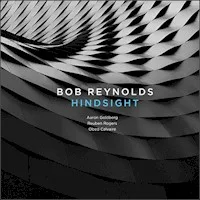Styles: Piano Jazz
Year: 1964
File: MP3@320K/s
Time: 39:16
Size: 90,2 MB
Art: Front
( 4:29) 1. Medley: The Man That Got Away/Hallelujah
(10:03) 2. The 'Porgy and Bess' Medley
( 4:32) 3. I Can't Get Started
( 3:00) 4. They Can't Take That Away from Me
( 2:53) 5. The Song Is Ended
( 5:11) 6. The Cole Porter Medley
( 3:04) 7. One for My Baby
( 3:06) 8. I've Got a Crush on You
( 2:54) 9. Just One of Those Things
In Concert: Town Hall
Year: 1964
File: MP3@320K/s
Time: 39:16
Size: 90,2 MB
Art: Front
( 4:29) 1. Medley: The Man That Got Away/Hallelujah
(10:03) 2. The 'Porgy and Bess' Medley
( 4:32) 3. I Can't Get Started
( 3:00) 4. They Can't Take That Away from Me
( 2:53) 5. The Song Is Ended
( 5:11) 6. The Cole Porter Medley
( 3:04) 7. One for My Baby
( 3:06) 8. I've Got a Crush on You
( 2:54) 9. Just One of Those Things
Piano jazz is a lot like pizza; even when it's terrible, it's still fairly good. Case in point is Joe Bushkin, a fine pianist for Eddie Condon who later watered down his style to appeal to a mass audience in concerts such as this 1963 performance. One can almost hear more passionate pianists shaking their fist at Bushkin because they are far more deserving of the recognition. To be fair, Bushkin is still a terrific pianist who can play as fast and as accurately as anyone out there, but one gets the sense that he is content to please an audience with technical wizardry and never seems to be working all that hard to be inventive. Guitarist Chuck Wayne seems to be the real treat, but is rendered inaudible most of the time except for a few brief solos (he seems to have difficulty finding a role in the context). The program is standard fare for cocktail lounges and cabarets Gershwin, Berlin, Porter all delivered with a sense of importance and sweeping drama. None of this is all that bad, but can you really purchase this album when there's so much other stuff out there that's more accomplished and nuanced? Pick up a Bill Evans record instead. ~ David Rickert https://www.allaboutjazz.com/in-concert-town-hall-joe-bushkin-collectables-review-by-david-rickert.php
Personnel: Joe Bushkin-piano; Chuck Wayne-guitar; Ed Shaughnessy-percussion; Milt Hinton-bass.
Personnel: Joe Bushkin-piano; Chuck Wayne-guitar; Ed Shaughnessy-percussion; Milt Hinton-bass.
In Concert: Town Hall





















